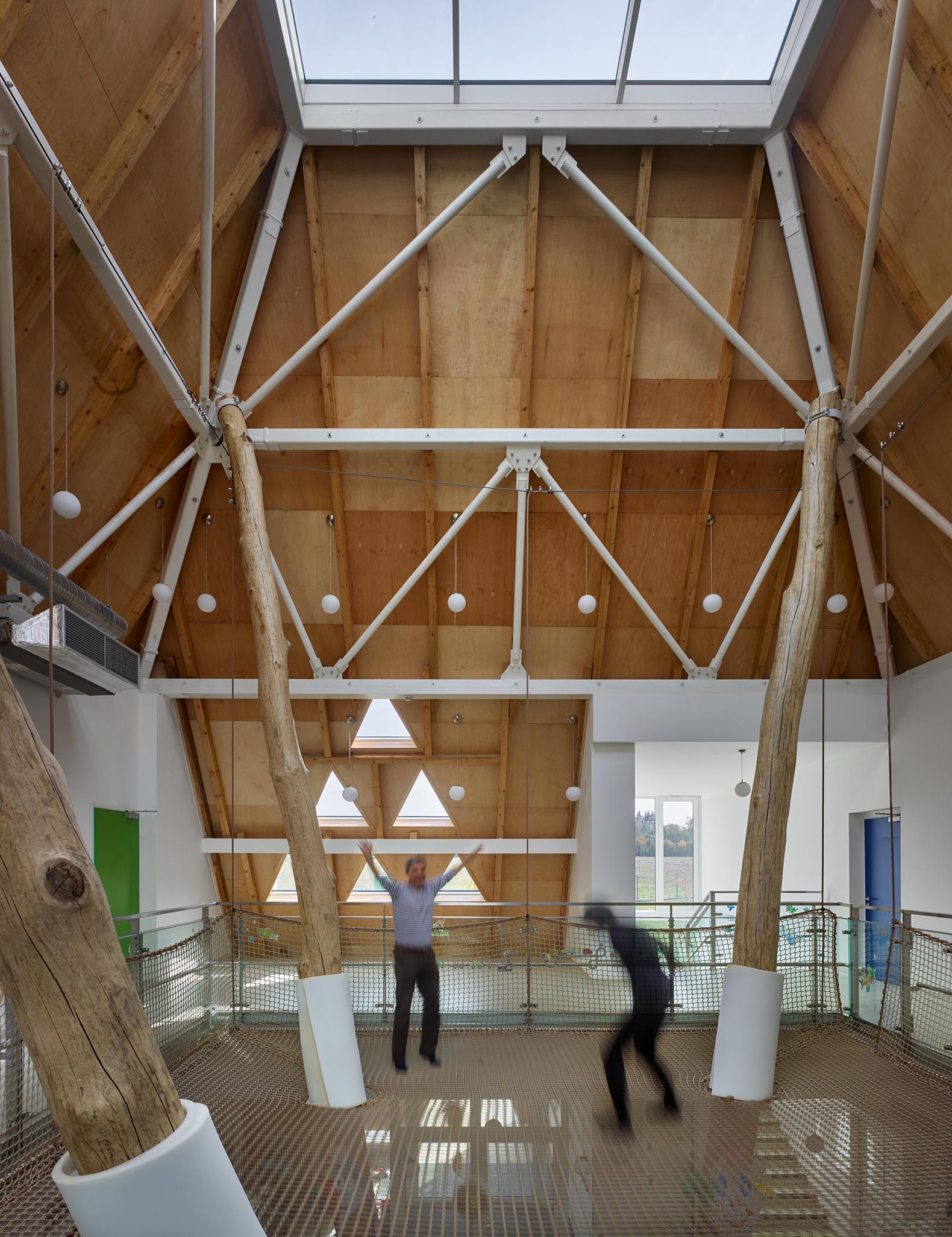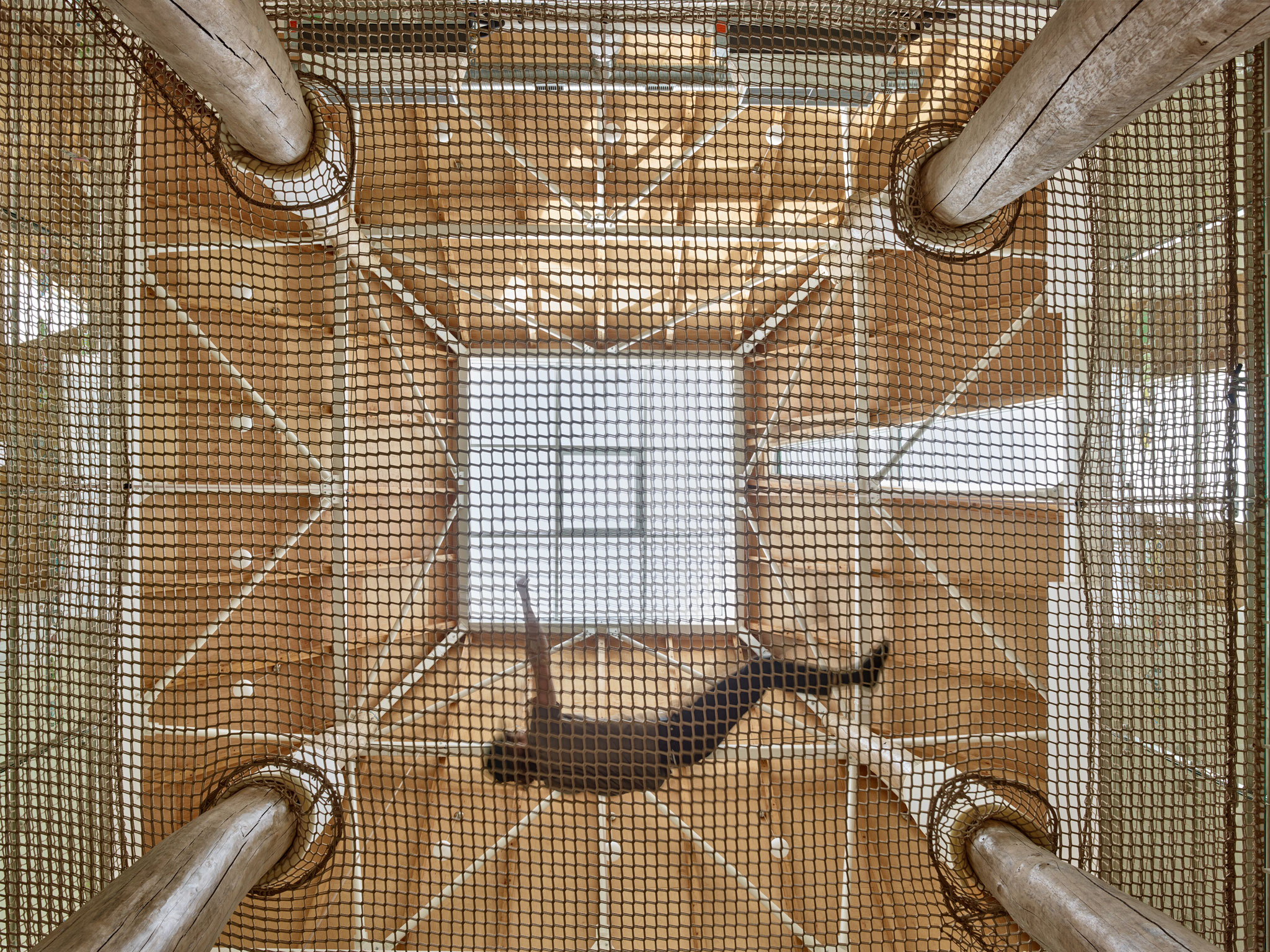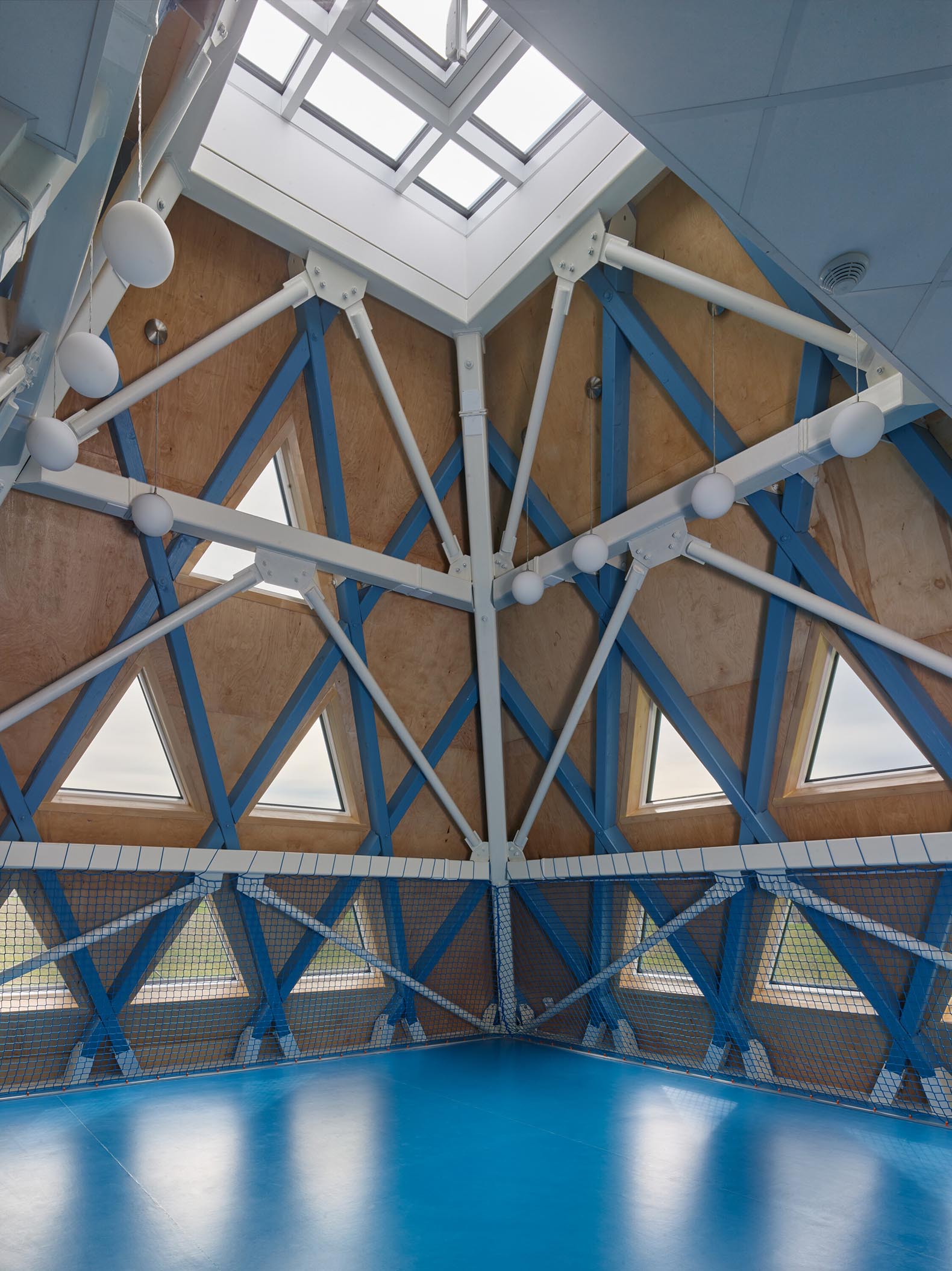On the other hand, individual classrooms emerge as colourful house-shaped volumes, breaking out of the rectangular mould and reaching for the garden. Inside these classrooms, spread over two floors, spaces transform into play areas for hiding, learning, and exploring. Shaped like Indian tee-pees, they allow ample daylight pours in from triangular windows, enlivening visible wooden structures that recall tree branches.

Větrník Kindergarten by Architektura. Photograph by Filip Šlapal.

Větrník Kindergarten by Architektura. Photograph by Filip Šlapal.
Project description by Architektura
The task of the city was to design a new kindergarten with a sports focus and a gym building. The nursery school is planned as part of the new development of the Říčany-Větrník area. We designed three objects and connected them to each other – a kindergarten, a gym, and a garden. The gymnasium will be built, while the kindergarten and part of the garden are constructed.
First, we thought about the child as a phenomenon – what constitutes childhood? Not only the family, and the experiences on the playground, it is also the objects they visit, and the institutions that fit them into the System. And what physical abilities does the child have? What does ageing lose? We found a lot of examples of non-traditional nurseries from all over the world. The child is in the System and the purpose is to become a proper and non-problematic part. That is why we see such a development in alternative education. The topic of education as a state discipline is an important phenomenon for us personally. In our civilized world, we talk about economic growth, but not enough about all details of education, about the mystery of childhood.
However, the Town of Říčany showed courage and generosity from the beginning. Many meetings took place with teachers, representatives of sports clubs, and the management of the Town of Říčany before the proposal was settled. We sensed interest in the project, thank you for that.

Větrník Kindergarten by Architektura. Photograph by Filip Šlapal.
The children themselves were essential – their games, movement, vision, and scale. Children's spontaneity, disorganization, unpredictability, purity, curiosity, optimism and unburdened by the bitterness of life.
We divided the mass into several parts. A cube in which there are facilities, offices, entrances... everything necessary for practical functioning. Individual classrooms then connected to this, which are no longer rectangular and connect to the garden. They are free-form worlds to play with. The pagodas form the silhouette of the house and from the inside, a hiding place, an Indian tee-pee, a space where the light falls from triangular windows, visible wooden structures like tree branches. In the entrance atrium, there is a spider web, a play area accessible from all classrooms, and a rope centre right in the building. We hope it will be used and the children will swing and fly. The net is carried by tree trunks that have been thanked for their service. The atrium also serves as a community space, for singing, acting, exhibitions, and theatre.
The nursery school has two faces, it holds a picture of the street, it is playful in the garden, and it does not function like a traditional house here. Here it shakes, matter breaks up and space opens up for the Sun to penetrate. The main entrance is from the street, with two classrooms on the ground floor, and two upstairs. The street facade of the kindergarten is partially designed as vertical greenery, we hope that it will sweep and thicken to one day absorb the entire facade. The entrance is supposed to resemble the entrance to a mysterious temple or spaceship. The management of the technical infrastructure is partially visual, letting the child see where the water, electricity, and airflow. The colours are cheerful, they should also illuminate the surroundings.

Větrník Kindergarten by Architektura. Photograph by Filip Šlapal.
Behind the house, there is a playground, currently unfinished, partially completed. Here, too, we wanted a green fantasy world to be created, as if from a children's book.
The construction took place with pressure on finances, not everything was realized according to our ideas, but this is standard in our job.
We wanted to build an object for children that is not an institution, it is playful and will enable the development of creativity and all the beautiful specificities of the child's soul. An object that will create subconscious images for children that may one day arise in adulthood to develop Something…





















































